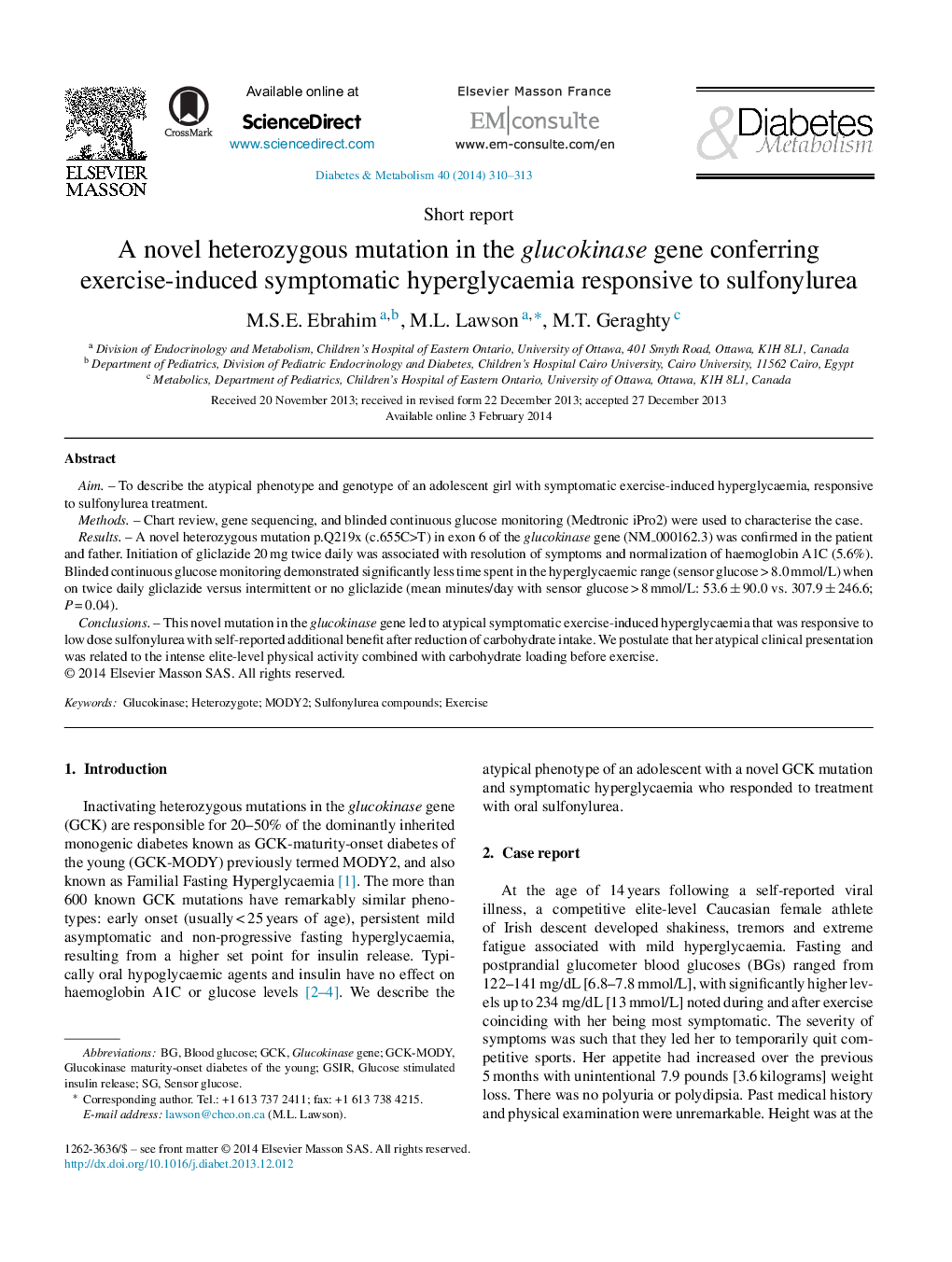| Article ID | Journal | Published Year | Pages | File Type |
|---|---|---|---|---|
| 3259370 | Diabetes & Metabolism | 2014 | 4 Pages |
AimTo describe the atypical phenotype and genotype of an adolescent girl with symptomatic exercise-induced hyperglycaemia, responsive to sulfonylurea treatment.MethodsChart review, gene sequencing, and blinded continuous glucose monitoring (Medtronic iPro2) were used to characterise the case.ResultsA novel heterozygous mutation p.Q219x (c.655C>T) in exon 6 of the glucokinase gene (NM_000162.3) was confirmed in the patient and father. Initiation of gliclazide 20 mg twice daily was associated with resolution of symptoms and normalization of haemoglobin A1C (5.6%). Blinded continuous glucose monitoring demonstrated significantly less time spent in the hyperglycaemic range (sensor glucose > 8.0 mmol/L) when on twice daily gliclazide versus intermittent or no gliclazide (mean minutes/day with sensor glucose > 8 mmol/L: 53.6 ± 90.0 vs. 307.9 ± 246.6; P = 0.04).ConclusionsThis novel mutation in the glucokinase gene led to atypical symptomatic exercise-induced hyperglycaemia that was responsive to low dose sulfonylurea with self-reported additional benefit after reduction of carbohydrate intake. We postulate that her atypical clinical presentation was related to the intense elite-level physical activity combined with carbohydrate loading before exercise.
